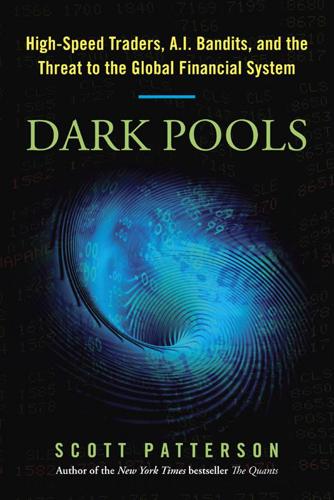
Dark Pools: The Rise of the Machine Traders and the Rigging of the U.S. Stock Market
by
Scott Patterson
Published 11 Jun 2012
While small by some standards, it was deemed substantial for a high-speed trading outfit—and spoke to the economics of the business. Fast traders make money by picking up pennies and nickels on thousands of trades a day. Because they move in and out of positions so rapidly, they can recycle a small amount of cash over and over again. Imagine lowering a water-powered generator into a stream of water. The faster the stream, the more energy it generates. The ability to scale up to massive volumes with seemingly little risk—in effect causing the stream to flow more rapidly—was a major reason why high-speed trading had become one of the industry’s hottest strategies by the late 2000s.
…
In part a solution to a problem, they were also the symptom of a disease. The lit market had become a playground for highly sophisticated traders—many of the very traders sitting in Mathisson’s audience—who’d designed and deployed the robo algos that hacked the market’s plumbing. Sadly, the exchanges had helped make all of this possible. They provided to the high-speed trading firms expensive, data-rich feeds that broadcast terabytes of information about specific buy and sell orders from giant mutual funds to the Bot algos. So much information that it could be used to engage in the hit-and-run tactics regulators, fund managers, and senators were screaming about. This was all playing out every day, every nanosecond, in the lit markets—a frenzied dance of predator and prey, with Mathisson’s peers playing the part of the swarming piranha.
…
If I’m swinging at market phantoms, buying too high, selling too low, what chance do ordinary investors have? It was so complex. The number of destinations for trading stocks was maddening. There were four public exchanges: the NYSE, Nasdaq, Direct Edge, and BATS (the latter two, which specialized in high-speed trading, appeared on the scene in 2005 and 2006, respectively). Inside each of those exchanges were various other destinations. The NYSE had NYSE Arca, NYSE Amex, NYSE Euronext, and NYSE Alternext. Nasdaq had three markets. BATS had two. Direct Edge had EDGA, which had no “maker-taker” system, and EDGX, which did.
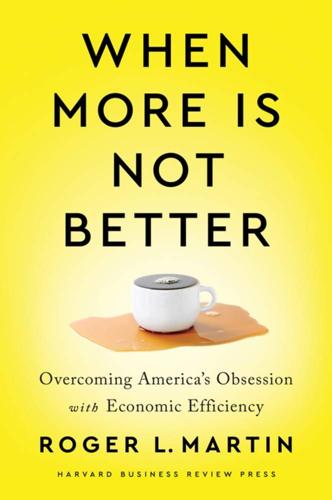
When More Is Not Better: Overcoming America's Obsession With Economic Efficiency
by
Roger L. Martin
Published 28 Sep 2020
These firms understood that having their servers in close proximity to NYSE servers would create a speed advantage. It would mean that trades from their colocated servers would reach the NYSE servers a few milliseconds faster than trades from servers not in the facility. This might sound like no difference at all, but the firms in question engage in what’s known as high-speed trading, in which a computer makes buy and sell decisions based on miniscule arbitrage opportunities in market prices, and shares are often held for fractions of a second. For this type of trading, getting your order to the front of the trading queue is not the most important thing—it is the only thing.
…
To begin with, it shows how quick players in the financial markets are at exploiting changes in the rules, regulations, and infrastructures surrounding the markets. It also shows that as the markets become more complex and technologically enabled, the cumulative small advantages that come from high-frequency trading are creating more and more of a gap between those players with the capital and know-how to engage in high-speed trading and those without. Spread Networks, for example, invested hundreds of millions of dollars to build a fiber-optic link along the shortest route between the NYSE and the Chicago Board of Trade. The link cut transmission time to an estimated 13.3 milliseconds. But that is a proverbial slow boat to China compared with the two microwave networks under construction, which promise to cut the time down to 8 to 9 milliseconds, because microwave is more direct than fiber-optical cable.15 As all these clever adaptations and the ensuing adaptations to the adaptations take place, we gradually see the stock market losing sight of its original purpose, which was to help companies issue stock to the public in order to enable the companies to grow their businesses.
…
In doing so, the stock market also enabled investors to participate in and benefit from the growth of the companies in which they invested. The creation of the Securities and Exchange Commission, in 1934, attempted to make sure traders didn’t supersede issuers or investors in the pecking order. But, with high-speed trading now accounting for as much as 70 percent of trading on the NYSE, it’s hardly surprising if we see the NYSE traders first, investors second, and issuers last—a completely upside-down world.16 Did the NYSE have issuers or investors in mind when it set up its operation in Mahwah? No, it was all about the traders.
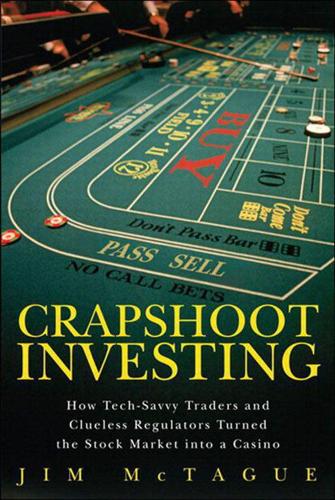
Crapshoot Investing: How Tech-Savvy Traders and Clueless Regulators Turned the Stock Market Into a Casino
by
Jim McTague
Published 1 Mar 2011
But that is not the end of the story. It is becoming increasingly clear that naked short selling was just the first of a series of issues surrounding the way stock trades are executed that create unfair advantages for powerful insiders,” he said. “We seem to be learning more every day about certain order types, high-speed trading, collocation of servers at exchanges, dark pools, and other indications that we have a two-tiered market: one for privileged insiders with high-speed computers and another for the average investor who must follow the rules. We need the SEC to move with urgency to restore investor protections and thereby strengthen the credibility and integrity of America’s financial markets,” he said.
…
Getco registered as a New York Stock Exchange (NYSE) specialist firm, and its competitors believed it was trying to convince regulators to make all HFT firms engaged in market-making activities to register with the SEC and adhere to strict capital standards, a change that would have driven many of the smaller trading firms out of business. Banks and Wall Street brokerages also established proprietary high-speed trading desks. But the majority of high-frequency traders were smaller proprietary trading shops or “prop shops,” which had no outside customers. They clustered around New York and Chicago to be close on the one hand to securities markets and on the other to the Chicago Mercantile Exchange (CME). The public often mislabeled high-frequency traders as “Quants.”
…
It took the company 47 minutes to realize it had gone bust and to call its clearing bank, to apprise it of the situation.4 Most HFT firms were collocating machines at multiple exchanges in both the equities and commodities markets, and the exchanges always welcomed these customers with open arms. Regulation National Market System (NMS), which had fostered competition among the exchanges to reduce costs to investors, had created a market in which HFT firms could thrive and so change the nature of trading that it became toxic for most everyone else. Endnotes 1. Jill Barshay, “High-Speed Trading Goes Off the Street,” Market Watch, August 26, 2009. http://marketplace.publicradio.org/display/web/2009/08/26/pm-colocation/. 2. Ibid. 3. Jacob Bunge, “DJ NYSE Euronext Turns on NJ Data Center as Emigration Begins,” Dow Jones News Wires, August 25, 2010. 4. Carol L. Clark, “Controlling Risk in a Lightning-Speed Trading Environment,” Chicago Fed Letter, March 2010, No. 272. 16.
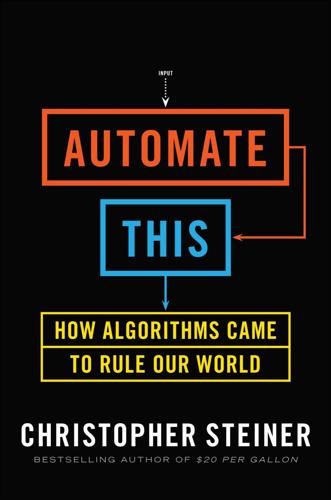
Automate This: How Algorithms Came to Rule Our World
by
Christopher Steiner
Published 29 Aug 2012
The irregular market, in which some stamps sold for more in one place than they did in another, enthralled him. He had discovered arbitrage, where one takes advantage of similar asset markets with disparate prices. An arbitrageur buys where the price is lower and sells where the price is higher—a strategy that, in far faster form, comprises the backbone of many modern high-speed trading operations. After graduating high school, Peterffy studied advanced geometry in a technical school for surveyors, with a long-term goal of college and a degree in civil engineering. But his education was derailed in 1965 when, at twenty-one, he got a short-term visa to visit some distant relatives in West Germany.
…
The programmers then typed the data by hand into their computers, whose algorithms issued prices for Mocatta to quote on the New York Commodities Exchange floor. The programmers, speaking to clerks near the floor action downtown, would bark out quotes as fast as the algorithm issued them, and Mocatta’s clerks would signal the prices to their pit traders with hand gestures. It was hardly high-speed trading, but it was the first time markets were consistently dictated by an algorithm. And the best part for Peterffy: the rest of the market had little idea where he got his numbers from. He might have entered Wall Street as a hacker with little market sense, but Peterffy’s trading instincts—born while chopping up chewing gum sticks, chasing scrap metal, and pawning stamps—became sharpened.
…
Peterffy thinks that in this age of light-speed trading, bids and offers on stocks should be held up for a minimum amount of time, still far less than a second, but enough to eliminate the head fakes, parries, and trickery that comprise the contemporary market and that lead us to clifflike falls and rocketlike spikes. His ultimate fear is that a rogue series of algorithms sparks a string of colossal losses that their owners can’t cover. Because some high-speed trading algorithms are able to trade on margin with leverage, it’s conceivable that a series of bad trades, all conducted in seconds, could lead to a liquidity crisis, bankrupting a trader’s broker and the clients he trades for. Such incidents have nearly happened before. In late 2009, Chicago’s Infinium Capital Management, one of the more secretive and powerful trading houses in the United States, twice lost control of an algorithm that began selling S&P 500 futures as fast as it could, dropping the market.

Who Gets What — and Why: The New Economics of Matchmaking and Market Design
by
Alvin E. Roth
Published 1 Jun 2015
Such a trader might be able to buy from them at their old prices (now out of date, or “stale”) and then moments later sell back to them at the new higher prices. The wider the spreads the liquidity providers quote, the further prices have to jump before they can be exploited on both sides of the trade this way, and the more they pass on the cost of protecting themselves to ordinary investors. Very high speed trading can also contribute to instability in the market. A famous example, in which high-speed trading of ES futures and SPY exchange-traded funds was implicated, is the “flash crash” of 2010. In just four minutes, the prices of futures and of the related SPY exchange-traded funds (as well as many of the stocks in the index) were driven down by several percentage points—a very big move, in the absence of earth-shattering news—and then recovered almost as fast.
…
A Game of (Milli)Seconds Not far from where wheat futures are traded at the Chicago Board of Trade, there’s another marketplace, the Chicago Mercantile Exchange. And near them both, at the University of Chicago, an innovative market designer named Eric Budish (a former student of mine) has been thinking about high-speed trading at both exchanges. Budish is looking at the growing use of computerized algorithms and how they influence financial markets. He’s also looking at how changes in the design of financial marketplaces might help solve some of their long-standing structural problems. The Chicago Mercantile Exchange is a lot like the New York Stock Exchange.
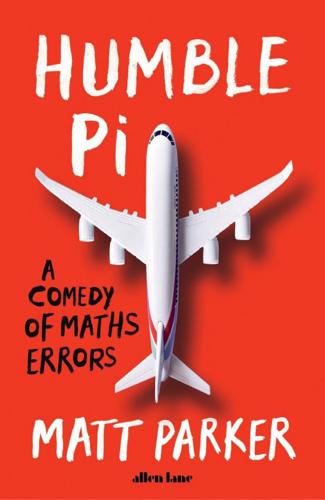
Humble Pi: A Comedy of Maths Errors
by
Matt Parker
Published 7 Mar 2019
And beer continues to help us make mistakes to this very day. Computerized money mistakes Our modern financial systems are now run on computers, which allows humans to make financial mistakes more efficiently and quickly than ever before. As computers have developed they have given birth to modern high-speed trading, where a single customer within a financial exchange can put through over a hundred thousand trades per second. No human can be making decisions at that speed, of course; these are the result of high-frequency trading algorithms where traders have fed requirements into the computer programs they have designed to automatically decide exactly when and how to make purchases and sales.
…
Traditionally, financial markets have been a means of blending together the insight and knowledge of thousands of different people all trading simultaneously; the prices are the cumulative result of the hivemind. If any one financial product starts to deviate from its true value, then traders will seek to exploit that slight difference, and this results in a force to drive prices back to their ‘correct’ value. But when the market becomes swarms of high-speed trading algorithms, things start to change. In theory, the result of high-frequency trading algorithms should be the same as the results gained by high-frequency trading people – to synchronize prices across different markets and reduce the spread of values – but on an even finer scale. Automatic algorithms are written to exploit the smallest of price differences and to respond within milliseconds.
…
– The Making of a Fly, Peter Lawrence (p. 50) I think we can all take something away from that. And it makes my purchase of the book now, technically, tax deductible. (Although probably not at the original price.) And they would have gotten away with it too, if it weren’t for the meddling laws of physics. In high-speed trading, data is king. If a trader has exclusive information about what the price of a commodity is likely to do next, they can place orders before the market has a chance to adjust. Or rather, that data can go straight into an algorithm that can make the order, placing decisions at incredible speeds.
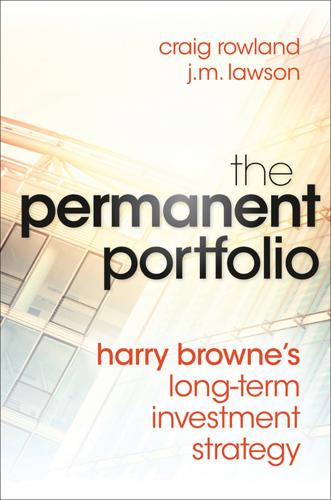
The Permanent Portfolio
by
Craig Rowland
and
J. M. Lawson
Published 27 Aug 2012
Porter, Cases in Competitive Strategy (New York: Free Press, 1983), 212. 3. Josef Lakonishok, Andrei Shleifer, and Robert W. Vishny, “The Impact of Institutional Trading on Stock Prices,” Journal of Financial Economics 32 (1992): 23–43. 4. Bob Pisani. Man Vs. Machine: Pros and Cons of High-Speed Trading. CNBC, September 13, 2011, www.cnbc.com/id/39041598/Man_Vs_Machine_Pros_and_Cons_of_High_Speed_Trading. Chapter 7 Bonds Bonds for Safety and Income During periods of prosperity when the economy is healthy and expanding, bonds provide a steady stream of income while also dampening the volatility of the stock market. There are, however, periods when the entire economy goes through a period of deflation, serious financial crisis, or some combination of destabilizing events.
…
Figure 6.1 Percentage of Daily Trades by Group. What this means is that nearly 9 out of 10 trades happening each day on Wall Street are between professionals. These groups are largely all trading against each other. Each has access to the same information, the same real-time news, the same hot tips, the same high speed trading systems, and so on. Yet, in every trade one party has decided to buy a stock and one has decided to sell that same stock. These professional groups of buyers and sellers are both trading on virtually identical information and making decisions that are 180 degrees away from each other. How can that be?
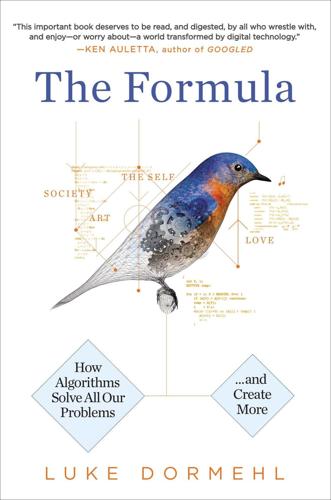
The Formula: How Algorithms Solve All Our Problems-And Create More
by
Luke Dormehl
Published 4 Nov 2014
On May 6, 2010, the Dow Jones Industrial Average plunged 1,000 points in just 300 seconds—effectively wiping out close to $1 trillion of wealth in a stock market debacle that became known as the Flash Crash. Unexplained to this day, the Flash Crash has been pinned on everything from the impact of high-speed trading to a technical glitch.15 Yet few people would seriously put forward the view that algorithms are, in themselves, bad. Indeed, it’s not simply a matter of algorithms doing the jobs that were once carried out manually; in many cases algorithms perform tasks that would be impossible for a human to perform.
…
The End of Work: The Decline of the Global Labor Force and the Dawn of the Post-Market Era (New York: G. P. Putnam’s Sons, 1995). 14 Evans, Christopher. The Mighty Micro (Sevenoaks, UK: Coronet, 1980). 15 Keim, Brandon. “Nanosecond Trading Could Make Markets Go Haywire.” Wired, February 16, 2012. wired.com/wiredscience/2012/02/high-speed-trading/. 16 bbc.co.uk/news/technology-18427851. 17 Fallows, Deborah. Search Engine Users, January 23, 2005. Pew Research Center and American Life Project, pewinternet.org. 18 Vaidhyanathan, Siva. The Googlization of Everything (and Why We Should Worry) (Berkeley: University of California Press, 2011). 19 MacCormick, John.

Flash Boys: A Wall Street Revolt
by
Michael Lewis
Published 30 Mar 2014
“Somebody would say, ‘Wait a second,’ ” recalls Carley. “ ‘If we want to continue with the strategies we are currently running, we have to be on this line. We have no choice but to pay whatever you’re asking. And you’re going to go from my office to talk to all of my competitors.’ ” “I’ll tell you my reaction to them,” says Darren Mulholland, a principal at a high-speed trading firm called Hudson River Trading. “It was, ‘Get out of my office.’ The thing I couldn’t believe was that when they came to my office they were going to go live in a month. And they didn’t even know who the clients were! They only discovered us from reading a letter we’d written to the SEC. . . .Who takes those kinds of business risks?”
…
The pension fund would not be able to say, for example, whether the Wall Street bank allowed its own proprietary traders to know of the big buy order, or if those traders had used their (faster than the dark pool) market connections to front-run the order on the public exchanges. Even if the Wall Street bank resisted the temptation to trade for itself against its own customers, there was virtually no chance they resisted the temptation to sell access to the dark pool to high-frequency traders. The Wall Street banks did not disclose which high-speed trading firms had paid them for special access to their dark pools, or how much they had paid, but selling that access was standard practice. Raising, again, the obvious question: Why would anyone pay for access to the customers’ orders inside a Wall Street bank’s dark pool? The straight answer was that a customer’s stock market order, inside a dark pool, was fat and juicy prey.
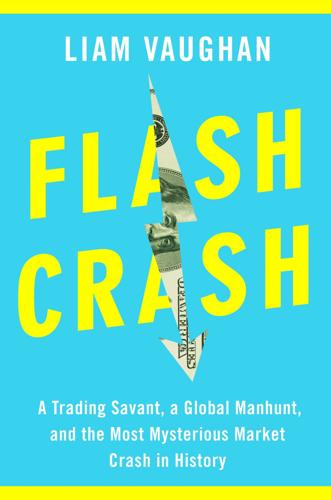
Flash Crash: A Trading Savant, a Global Manhunt, and the Most Mysterious Market Crash in History
by
Liam Vaughan
Published 11 May 2020
Notwithstanding this information black hole, the government was under pressure to reassure the public that it had matters under control. Throughout the next day and into the weekend, the Flash Crash dominated the press, and the consensus was that the rise in algorithmic trading was to blame. “High-Speed Trading Glitch Costs Investors Billions,” wrote the New York Times. The timing could hardly have been worse. That month, the biggest finance bill since the Great Depression, the Dodd-Frank Wall Street Reform and Consumer Protection bill, was wheedling its way across the floor of the Senate. It was a mammoth piece of legislation that already had staff at the agencies working around the clock.
…
CHAPTER 11: THE AFTERMATH Since 2005 and the introduction of a set of rules: The Regulation National Market System, or “Reg NMS,” rules were introduced by the SEC to try to foster competition in U.S. stock markets and ensure investors received the best possible price for their orders. One consequence was a significant rise in the number of exchanges and alternative trading venues and, in response to that, an explosion in the number of HFT firms seeking to capitalize on the opportunities thrown up by the fragmented new market structure. “High-Speed Trading Glitch Costs Investors Billions”: Nelson D. Schwartz and Louise Story, New York Times, May 6, 2010. “A temporary $1 trillion drop in market value”: Mark R. Warner, senator from Virginia, “Investigating the Wall Street Freefall,” May 7, 2010, https://warner.senate.gov. It was an illustrious group: The committee’s members were Brooksley Born, ex-CFTC chair; Jack Brennan, ex-CEO of investment company the Vanguard Group; NYU Stern professor Robert Engle; Richard Ketchum, former director of market regulation at the SEC; Cornell professor Maureen O’Hara; ex–Federal Reserve board member Susan Phillips; ex–SEC chair David Ruder; and Joseph Stiglitz from Columbia Business School.
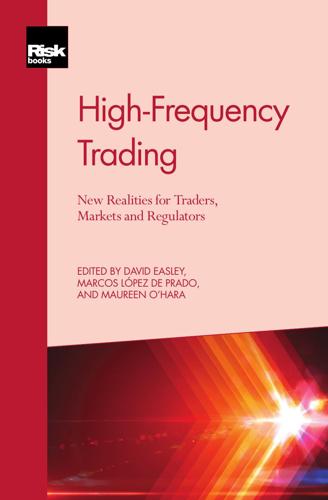
High-Frequency Trading
by
David Easley
,
Marcos López de Prado
and
Maureen O'Hara
Published 28 Sep 2013
HFT strategies were made possible by legislative changes in the US (Regulation National Market System law of 2005, known as “Reg NMS”) and Europe (the Markets in Financial Instruments Directive, or “MiFID”, in force since November 2007), preceded by substantial technological advances in computation and communication. High-speed trading had been technologically possible for many years, but it was legislative action that made HFT profitable. MiFID fostered greater competition among brokers, with the objective of improving liquidity, cohesion and depth in financial markets. It allowed new, highly technological competitors to enter the European markets, thereby introducing competition for what had been a relatively quiescent, exchange-dominated market structure.
…
“The Diversity of High-Frequency Traders”, Journal of Financial Markets, forthcoming. Hasbrouck, J., and G. Saar, 2013, “Low Latency Trading”, Journal of Financial Markets, forthcoming. Hendershott, T., C. M. Jones and A. J. Menkveld, 2011, “Does Algorithmic Trading Improve Liquidity?” Journal of Finance 66, pp. 1–33. Javers, E., 2013, “How High-Speed Trading Is about to Get Speedier”, April 11. URL: http://www.cnbc.com/. Jones, C., 2013, “What Do We Know about High Frequency Trading?”, Working Paper. Linton, O., M. O’Hara and J. P. Zigrand, 2012, “Economic Impact Assessments on Policy Measures”, in Foresight: The Future of Computer Trading in Financial Markets.
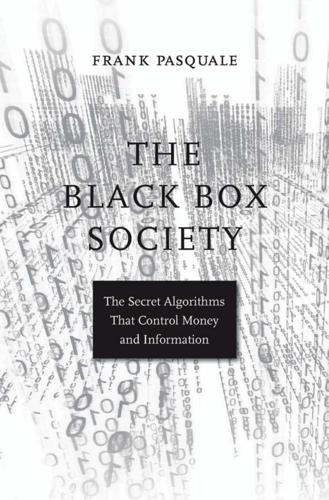
The Black Box Society: The Secret Algorithms That Control Money and Information
by
Frank Pasquale
Published 17 Nov 2014
HFT often involves “very high order amounts; rapid order cancellation; a flat position at the end of the trading day; extracting very low margins per trade; and trading at ultra-fast speeds.” Andrew J. Keller, “Robocops: Regulating High Frequency Trading after the Flash Crash of 2010,” Ohio State Law Journal 73 (2012): 1459. 121. Matthew O’Brien, “High-Speed Trading Isn’t About Efficiency—It’s About Cheating,” The Atlantic, February 8, 2014. Available at http://www.the atlantic .com /business /archive /2014 /02/high-speed-trading -isnt-about-efficiency-its-about-cheating /283677/; Charles Schwab and Walt Bettinger, “Statement on High-Frequency Trading,” April 3, 2014. Available at http:// www.aboutschwab.com /press/issues/statement _on _high _frequency_trading. 122.

Makers and Takers: The Rise of Finance and the Fall of American Business
by
Rana Foroohar
Published 16 May 2016
The key point is that the public policy decisions that aided financialization didn’t happen all at once, but were taken incrementally, creating a dysfunctional web of changes in areas like tax, trade, regulatory policy, corporate governance, and law. It’s a web that will take time and tremendous effort to dismantle. Financialization is behind the shifts in our retirement system and tax code that have given banks ever more money to play with, and the rise of high-speed trading that has allowed more and more risk and leverage in the system to serve up huge profits to a privileged few. It is behind the destructive deregulation of the 1980s and 1990s, and the failure to reregulate the banking sector properly after the financial crisis of 2008. Individuals from J.P. Morgan and Goldman Sachs may (or, more often, may not) go to jail for reckless trading, but the system that permitted their malfeasance remains in place.
…
Weill called the merger “the greatest deal in the history of the financial services industry” and “the crowning of my career.”1 It was a transaction that would allow the newly formed company to offer pretty much every financial service ever invented, from credit cards to corporate IPO underwriting, high-speed trading to mortgages, investment advice to the sale of any complex security you could imagine, in 160-plus countries, twenty-four hours a day. As with the British Empire in a former era, the sun never set on Citigroup. So it was quite a moment when, in mid-2012, the emperor had an ideological abdication.

The Stack: On Software and Sovereignty
by
Benjamin H. Bratton
Published 19 Feb 2016
The limits of machinic calculation are not the same as the limits of deterministic rationality, and the social effects of computational systems are certainly given to creative accidents.17 Reactionary analog aesthetics and patriotisms, Emersonian withdrawal, and deconstrucivist political theology buy us less time and far less wiggle room than they promise, even less actually than the unfortunate notion that planetary-scale computation could emerge and mature without fundamental constitutive violence against traditional (that is, “modern”) concepts of individual, society, and sovereignty. Because they simulate logic but are not themselves necessarily logical, computers make the world in ways that do not ultimately require our thinking to function (such as the interactions between high-speed trading algorithms that even their programmers cannot entirely predict and comprehend). The forms of inhuman intelligence that they manifest will never pass the Turing test, nor should we bother asking this of them. It is an absurd and primitive request.18 It is inevitable that synthetic algorithmic intelligences can and will create things that we have not thought of in advance or ever intended to make, but as suggested, because they do not need our thinking or intention as their alibi, it is their inhumanity that may make them most creative.19 Like Deleuze on the beach making sand piles, humans wrangle computation with our algorithm boxes, and in doing so, we make things by accident, sometimes little things like signal noise on the wire and sometimes big things like megastructures. 17.
…
In this large-scale bandwidth, provision and access becomes a core spatial planning strategy, whether for small market cities like Kansas City, Missouri, the first test bed for Google's 100 megabyte fiber network, or for large market actors like traders who relocate their offices farther down the island in Manhattan to get closer to the central switches on Wall Street and shave nanoseconds off high-speed trading cycles. Despite its global spread and horizontal ubiquity, for Stack urbanism, proximity to the center, as defined by supermassive concentrations of bit flows, is seen as essential. 12. See David Kusner, “The Real Story of Stuxnet,” IEEE Spectrum, February 23, 2013, http://spectrum.ieee.org/telecom/security/the-real-story-of-stuxnet. 13.
…
Among other things, the financial crisis is a crisis of addressability, a de-addressing of things, and one that continues consolidating a shift within global market economics (when not also collapsing them). We can only anticipate what forms of high weirdness will ensue, as the paired computerization of matter-into-monies (i.e., carbon credits trading, where the value of money is itself measured in carbon) and monies-into-virtuality (i.e., the light pulses of high-speed trading) continues to evolve and accelerate.8 New addressing schemes to locate and coordinate instances of value are multiplying, both as generic currency (bitcoin blockchains) and as platforms for brokering things-with-value (various sharing economy schemes). At stake in all this is also the design of the economy of information itself, from the smallest-scale object or gesture to the largest topological frameworks, and interrelations across scales by drawing and managing an orthodox map in the form of an address table.9 What gets to count and to whom, and who profits from merely counting?

Digital Empires: The Global Battle to Regulate Technology
by
Anu Bradford
Published 25 Sep 2023
China (June 17, 2019), https://www.most.gov.cn/kjbgz/201906/t20190617_147107.html, translated in Graham Webster, Lorand Laskai, Translation: Chinese Expert Group Offers “Governance Principles” for “Responsible AI,” DigiChina (June 17, 2019), https://digichina.stanford.edu/work/translation-chinese-expert-group-offers-governance-principles-for-responsible-ai/. 147.Sebastian Mallaby, The Power Law: Venture Capital and the Making of the New Future 225 (2022). 148.Id. at 224. 149.Id. at 226. 150.Id. at 231–232. 151.James Kynge, For US Venture Funds, Next Jack Ma Is Outside China, Nikkei Asia (Mar. 5, 2020), https://asia.nikkei.com/Spotlight/Comment/For-US-venture-funds-next-Jack-Ma-is-outside-China. 152.Mallaby, supra note 147, 233 (2022). 153.Rolfe Winkler, Jing Yang, & Alexander Osipovich, Secretive High-Speed Trading Firm Hits Jackpot with TikTok, Wall St. J. (Oct. 1, 2020), https://www.wsj.com/articles/secretive-high-speed-trading-firm-hits-jackpot-with-tiktok-11601544610?utm_campaign=The%20Interface&utm_medium=email&utm_source=Revue%20newsletter. 154.Qualcomm Ventures: Two Decades of Driving Innovation in Mobile, Qualcomm Ventures (Nov. 25, 2020), https://www.qualcommventures.com/insights/blog/qualcomm-ventures-two-decades-of-driving-innovation-in-mobile/. 155.Mallaby, supra note 147, at 231–232. 156.Wei Gu, “Amazon of China” Gets a Jolt from Venture Capital, Globe & Mail (Nov. 20, 2012), https://www.theglobeandmail.com/globe-investor/amazon-of-china-gets-a-jolt-from-venture-capital/article5479388/. 157.Saheli Roy Choudhury, Google Places a $550 Million Bet on China’s Second-Largest E-Commerce Player, CNBC, https://www.cnbc.com/2018/06/18/google-to-invest-550-million-into-chinas-jd-com.html. 158.Adam Lysenko, Thilo Hanemann, & Daniel H.
…
Specific examples of American capital behind China’s largest tech companies include Goldman Sachs, which invested $3.3 million into Alibaba back in 1999, helping Jack Ma start his company while enhancing Alibaba’s credibility in subsequent funding rounds151—even though the US bank exited from Alibaba prematurely, forgoing tremendous financial gains that ensued for other investors.152 As of October 2020, ByteDance’s largest outside investor was reportedly a US high-speed trading firm, Susquehanna, which had invested in the company in 2012.153 Qualcomm Ventures counts itself among the early investors of the phone maker Xiaomi.154 Tencent started in 1998 with the backing of a US-based VC fund called IDG, and Baidu benefited from another American VC fund, DFJ.155 American venture capital similarly contributed to the growth of JD.com,156 which also secured a $550 million investment from Google in 2018.157 The importance of US VC in growing China’s tech sector is hard to overstate even though over the years China’s own VC culture has matured away from the US.

The Asylum: The Renegades Who Hijacked the World's Oil Market
by
Leah McGrath Goodman
Published 15 Feb 2011
They pointed to what they called “phantom trading volume,” “fake orders,” and “quote-stuffing” that made oil prices appear to be headed one way when they were really headed another. It was a problem worth looking into, but with Washington’s track record of understanding even the most basic financial instruments, like weather futures, it seemed unlikely it would be capable of troubleshooting advanced technology possibly being repurposed for the execution of illicit, high-speed trades. The trader accused of spilling the most blood in the new battlefield of financial warfare emerged not in the trading pits but in the unregulated over-the-counter market and outside U.S. borders. Since Nymex had gone electronic, traders didn’t need to be in the country anymore to game the U.S. energy market with the click of a mouse.
…
You’d think being the vice chairman of the world’s biggest oil market would count for something, but I guess not. So I retired. Now I have a lot of season tickets to games and watch a lot of live sports.” Vinnie Viola Still a trader, Viola runs a Madison Avenue market-making firm and is a well-known champion of the kind of high-speed trading blamed for the disastrous “flash crash” of May 2010, when the stock market inexplicably plummeted, bleeding hundreds of billions of dollars, before bouncing back in just twenty minutes. He has continued opening other trading shops and running his banks in Texas. It’s a far cry from where he started, betting on gasoline in the pits with his boyhood friends from Brooklyn.
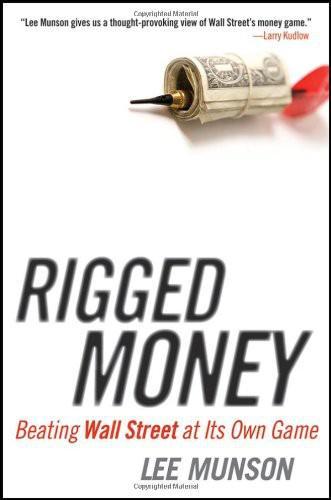
Rigged Money: Beating Wall Street at Its Own Game
by
Lee Munson
Published 6 Dec 2011
It short-changes competition by giving a select few the opportunity to play their hands without showing them. Longer term, it undermines the incentive for traders to show at least some interest in public markets. The exception to the regulation allowing flash orders was adopted in 1978, long before the use of high-speed trading systems. Now it is simply a loophole that needs to be closed. Who Decides the Best Price? This is what the Securities Reform Act of 1975 was all about: Creating a national market system to share securities transactions in real time. While the technology has changed from the original version, we still have a central network that consolidates trade information to create the tape.

Cogs and Monsters: What Economics Is, and What It Should Be
by
Diane Coyle
Published 11 Oct 2021
Kahneman, D., 2011, Thinking, Fast and Slow, New York: Allen Lane. Kaldor, N., 1939, ‘Welfare Propositions of Economics and Interpersonal Comparisons of Utility’, The Economic Journal, 49 (195), 549–552. Keim, B., 2012, ‘Nanosecond Trading Could Make Markets Go Haywire’, Wired, 16 February, http://www.wired.com/wiredscience/2012/02/high-speed-trading/all/1, accessed 19 March 2012. Kelman, S., 1981, ‘Cost Benefit Analysis: An Ethical Critique’, Regulation, 7 February, 33–40. Kelton, S., 2020, The Deficit Myth, London: John Murray. Keynes, J. M., 1931, ‘The Future’, in Essays in Persuasion, London: Macmillan, 315–334. Keynes, J. M., 1936, The General Theory of Employment, Interest and Money, London: Macmillan.
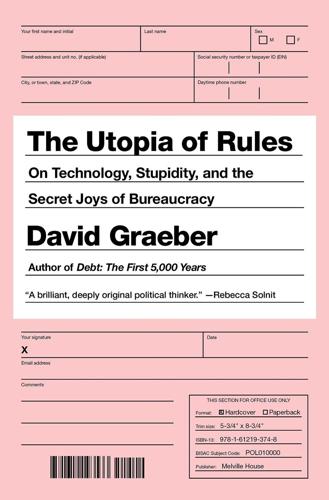
Bureaucracy
by
David Graeber
Published 3 Feb 2015
Since what is the world of securitized derivatives, collateralized debt obligations, and other such exotic financial instruments but the apotheosis of the principle that value is ultimately a product of paperwork, and the very apex of a mountain of assessment forms which begins with the irritating caseworker determining whether you are really poor enough to merit a fee waiver for your children’s medicine and ends with men in suits engaged in high-speed trading of bets over how long it will take you to default on your mortgage. A critique of bureaucracy fit for the times would have to show how all these threads—financialization, violence, technology, the fusion of public and private—knit together into a single, self-sustaining web. The process of financialization has meant that an ever-increasing proportion of corporate profits come in the form of rent extraction of one sort or another.

The Glass Cage: Automation and Us
by
Nicholas Carr
Published 28 Sep 2014
At its Wall Street trading desk, it has installed a proprietary software program, called THOR, that actually slows down the transmission of buy and sell orders in a way that protects them from the algorithmic manipulations of high-speed traders. By slowing the orders, RBC has found, trades often end up being executed at more attractive terms for its customers. The bank admits that it’s making a trade-off in resisting the prevailing technological imperative of speedy data flows. By eschewing high-speed trading, it makes a little less money on each trade. But it believes that, over the long run, the strengthening of client loyalty and the reduction of risk will lead to higher profits overall.35 One former RBC executive, Brad Katsuyama, is going even further. Having watched stock markets become skewed in favor of high-frequency traders, he spearheaded the creation of a new and fairer exchange, called IEX.
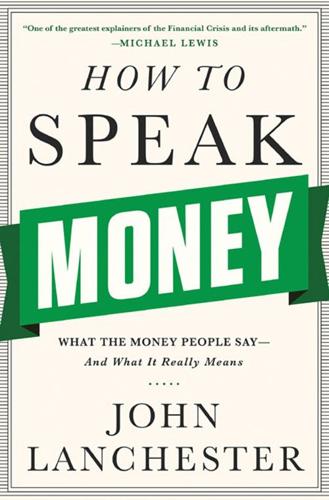
How to Speak Money: What the Money People Say--And What It Really Means
by
John Lanchester
Published 5 Oct 2014
There’s no better place to start than with the work of Michael Lewis, perhaps beginning with his first book, Liar’s Poker, an account of his job working as a bond trader at Salomon Brothers, and then skipping forward to The Big Short, a riveting description of the shenanigans behind the credit crunch. His most recent book, Flash Boys, is an account of high-speed trading that will make your hair stand on end, if it hasn’t all fallen out from worry by the time you’ve finished reading it. Alice Shroeder’s The Snowball, a biography of Warren Buffett, is very different in tone and texture, but it brings in a lot of stories and information from the world of finance, as does Sebastian Mallaby’s More Money Than God, a (suprisingly and convincingly positive) study of hedge funds.

About Time: A History of Civilization in Twelve Clocks
by
David Rooney
Published 16 Aug 2021
The Relentless Revolution. New York and London: W. W. Norton & Company, 2010. Aquilina, Matteo, and Carla Ysusi. Are High-Frequency Traders Anticipating the Order Flow? Cross-Venue Evidence from the UK Market (Occasional Paper 16). London: Financial Conduct Authority, 2016. Aron, Jacob. “Atomic Time to Rule High-Speed Trading.” New Scientist, no. 1186 (April 19, 2014). Braudel, Fernand. Civilization and Capitalism, 15th–18th Century, Vol. II: The Wheels of Commerce. London: William Collins Sons & Co., 1982. Cartwright, Jon. “Time Traders.” Physics World, July 2018. Dohrn-van Rossum, Gerhard. History of the Hour: Clocks and Modern Temporal Orders.
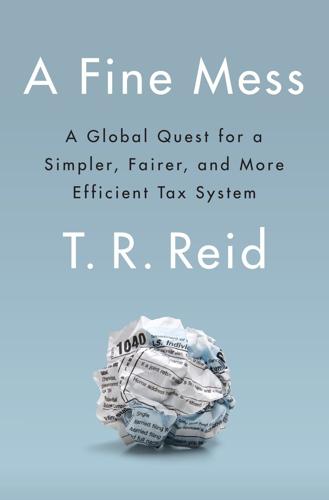
A Fine Mess
by
T. R. Reid
Published 13 Mar 2017
The United States should follow the lead of the European Union and many other countries by enacting one particular form of a consumption tax, the financial activities tax. As we saw in chapter 9, the tax rate for this kind of levy can be tiny—$1 on a million-dollar trade. Because of Wall Street’s current obsession with high-speed trading—buying securities, selling securities, swapping securities, all in a few millionths of a second—this tax can add up to significant revenue while adding an infinitesimal cost to each transaction. Taking the BBLR approach as the guiding principle of tax reform will go far to simplify the tax laws.

Wait: The Art and Science of Delay
by
Frank Partnoy
Published 15 Jan 2012
After all, they save three whole milliseconds.4 Why are three milliseconds so important? For some traders, having an electronic buy or sell order arrive first can be the difference between making money and losing money. If only one share is available at a low price, the first buy order to arrive will secure that price. Any later orders might pay more. High-speed trading can be a kind of temporal arms race, like a superfast version of holiday shopping. If you aren’t among the first customers in line on Black Friday for the post-Thanksgiving sale, by the time you get in the door the best bargains will be gone. High-frequency traders say this kind of superfast computerized trading is good for all investors because we can buy or sell whenever we want at the lowest possible cost.

Broken Markets: How High Frequency Trading and Predatory Practices on Wall Street Are Destroying Investor Confidence and Your Portfolio
by
Sal Arnuk
and
Joseph Saluzzi
Published 21 May 2012
The market is like a shattered vase that is now held together with glue called high frequency trading (HFT), and that glue is weak—very weak. In addition to fragmentation, under the cover of the digital revolution, conflicted stakeholders—stock exchanges, brokers, and owners of ATSs (alternative trading systems)—have • Enlisted their own regulators to help them create a mechanism that places high-speed trading interests above the interests of all other market participants, particularly investors. • Converted member-owned nonprofit legal structures into ones that are for-profit, which have enabled them to embark upon new business models centered around the creation and distribution of data feeds.

What Algorithms Want: Imagination in the Age of Computing
by
Ed Finn
Published 10 Mar 2017
For the pension fund, the trade would be just a little more expensive than anticipated, but iterated over millions of transactions a day the taxes become substantial. HFT offers one of the purest examples of algorithms that are fundamentally altering an existing culture machine, that venerable assemblage of math, social practices, faith-based communities, and arbitrage that we call “the market.” The introduction of high-speed trading and algorithms that are effectively fully automated engines of commerce has done more than eliminate humans from the trading floor: these systems operate in open competition with humans and one another, and they are gradually transforming the broader movement of capital. HFT arbitrageurs build their advantage through complex geographical maneuvers, by locating their servers and fiber-optic lines a few feet closer to the exchanges’ central servers than their competitors, or leasing communication lines that shave a few miles off the best direct signal pathway between two points on the financial grid.
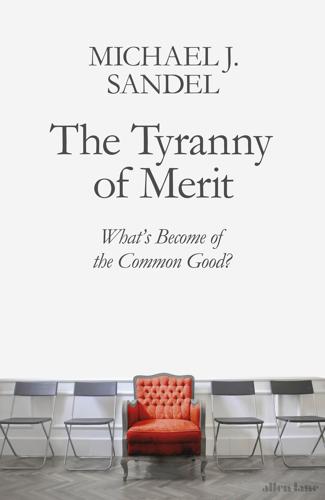
The Tyranny of Merit: What’s Become of the Common Good?
by
Michael J. Sandel
Published 9 Sep 2020
The cable increased the speed of trades on pork belly futures and other speculative bets by a few milliseconds. This minuscule edge was worth hundreds of millions of dollars to high-speed traders. 60 But it is hard to claim that speeding up such transactions from the blink of an eye to something even faster contributes anything of value to the economy. High-speed trading is not the only financial innovation of dubious economic value; credit default swaps that enable speculators to bet on future prices without investing in any productive activity are hard to distinguish from casino gambling. One party wins and the other loses, money changes hands, but no investment occurs along the way.

Rise of the Robots: Technology and the Threat of a Jobless Future
by
Martin Ford
Published 4 May 2015
Likewise, automated trading algorithms are now responsible for nearly two-thirds of stock market trades, and Wall Street firms have built huge computing centers in close physical proximity to exchanges in order to gain trading advantages measured in tiny fractions of a second. Between 2005 and 2012, the average time to execute a trade dropped from about 10 seconds to just 0.0008 seconds,56 and robotic, high-speed trading was heavily implicated in the May 2010 “flash crash” in which the Dow Jones Industrial Average plunged nearly a thousand points and then recovered for a net gain, all within the space of just a few minutes. Viewed from this perspective, financialization is not so much a competing explanation for our seven economic trends; it is rather—at least to some extent—one of the ramifications of accelerating information technology.
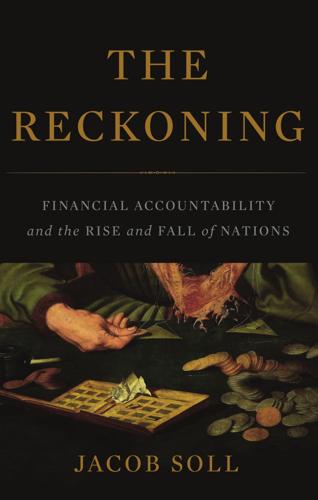
The Reckoning: Financial Accountability and the Rise and Fall of Nations
by
Jacob Soll
Published 28 Apr 2014
And yet, our predicament follows a historical pattern: No sooner is an accounting reform made than we find a way to resist it. Indeed, the rise of technology has made the task of accountability even more daunting, as regulators and even auditors come up against labyrinthine big numbers and financial logarithms, high-speed trading, and complex financial products such as bundled mortgages. As governments struggle with the paradox of the power and frailty of the Big Four accounting firms, their own account books are in increasing disarray. Risky mortgage bundles are still difficult to value and pose a threat to banking and the stock market.

Platform Revolution: How Networked Markets Are Transforming the Economy--And How to Make Them Work for You
by
Sangeet Paul Choudary
,
Marshall W. van Alstyne
and
Geoffrey G. Parker
Published 27 Mar 2016
Yet the existence of arbitrage opportunities also highlights market inefficiencies. eBay now uses automated systems to provide spelling assistance, so sellers can have more confidence that they’ll receive what their items are worth. In a case like this, wise governance may disenfranchise a specific group of stakeholders, such as arbitrageurs, in order to increase the overall health of the ecosystem. High-speed trading on the New York Stock Exchange offers another example. Firms like Goldman Sachs use supercomputers to determine when an order placed in one market will spill over to another market. Then they swoop in to intercept the deal, buying low, selling high, and skimming the margin. This methodology gives a few market participants who can afford massive computing power an unfair advantage over others.35 Such asymmetric market power risks driving away players who feel cheated.

Planet Ponzi
by
Mitch Feierstein
Published 2 Feb 2012
Can you imagine operating a bank with risk management systems so slipshod that you can simply lose $2 billion? Do you not think that somebody might have noticed after, let’s say, the first few hundred million went missing? It’s astonishing how much money Wall Street handles – and how chaotic its control systems continue to be. 29 Javier Blas, ‘High-speed trading blamed for sugar rises,’ Financial Times, Feb. 8, 2011. 30 Peter Guest, ‘Volatility will go on in world’s largest cocoa supplier,’ CNBC News, April 28, 2011. Chapter 11: Collecting nickels in front of steamrollers 1 Michael Lewis, The Big Short (Allen Lane, 2010), p. 62. 2 Lewis, The Big Short, p. 61 3 Lewis, The Big Short, p. 63.
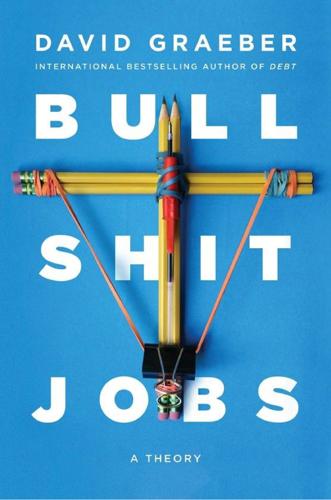
Bullshit Jobs: A Theory
by
David Graeber
Published 14 May 2018
These days, it’s hard to recall the almost mystical aura with which the financial sector had surrounded itself in the years leading up to 2008. Financiers had managed to convince the public—and not just the public, but social theorists, too (I well remember this)—that with instruments such as collateralized debt obligations and high-speed trading algorithms so complex they could be understood only by astrophysicists, they had, like modern alchemists, learned ways to whisk value out of nothing by means that others dared not even try to understand. Then, of course, came the crash, and it turned out that most of the instruments were scams.
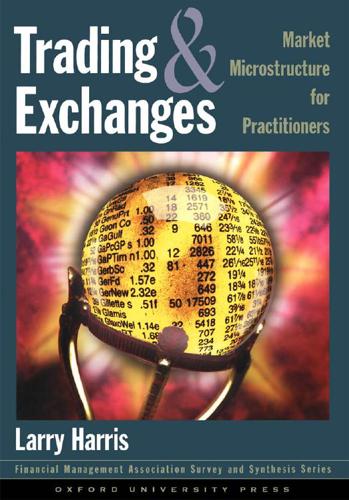
Trading and Exchanges: Market Microstructure for Practitioners
by
Larry Harris
Published 2 Jan 2003
. ◀ * * * Finally, public policy should be hostile to the efforts of profit-motivated traders who design trading strategies to exploit other traders. Price manipulators, bluffers, and front runners hurt other traders while doing nothing to make markets more liquid or prices more informative in the long run. This group also includes traders who employ very high-speed trading strategies to take liquidity from dealers who are slow to adjust their prices when values change. The value of the price discipline that they provide market makers over short intervals—typically, less than five seconds long—is small compared to the value of the liquidity that they take from the market. 9.7 SUMMARY Most people would like to have the best markets possible.
…
SOES bandits were traders who used the Nasdaq Small Order Execution System (SOES) to submit orders designed to profit from very short-term price changes. The losers generally were Nasdaq dealers who adjusted their quotes a few seconds too slowly. These dealers naturally complained vociferously. These high-speed trading strategies ultimately caused spreads to widen because dealers and other traders had to recover from other traders what they lost to the SOES bandits. Since Nasdaq wanted its markets to have narrow spreads, it tried to protect its dealers from SOES bandits. To this end, Nasdaq tried to classify SOES bandits as professional short-term traders and thereby restrict their access to the SOES system.
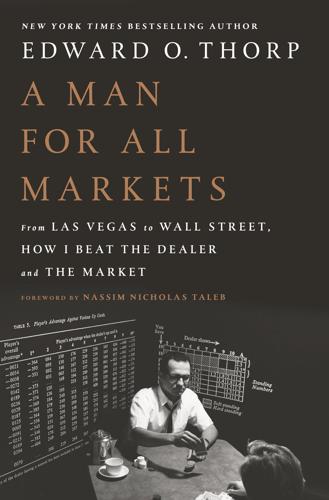
A Man for All Markets
by
Edward O. Thorp
Published 15 Nov 2016
See also: (1) Patterson, Scott, and Geoffrey Rogow, “What’s Behind High-Frequency Trading,” Wall Street Journal, Saturday/Sunday, August 1–2, 2009, page B1. (2) Wilmott, Paul, “Hurrying Into the Next Panic?”, New York Times, Wednesday, July 29, 2009, page A19. Krugman disagrees sharply Krugman, Paul, “Rewarding Bad Actors,” New York Times, Monday, August 3, 2009, page A19. See also O’Brien, Matthew, “High Speed Trading Isn’t About Efficiency—It’s About Cheating.” The Atlantic, February 2014. cut a trading rate The dollar value of all trades in U.S. equities varies from year to year, as does the portion created by the high-frequency traders. Business Day headline New York Times, September 28, 2000. CHAPTER 19 billion shares annually The Medallion Fund, a hedge fund closed to new investors, run by mathematician James Simons, includes a similar and far larger trading operation than ours with a higher rate of turnover and a vast annual trading volume.
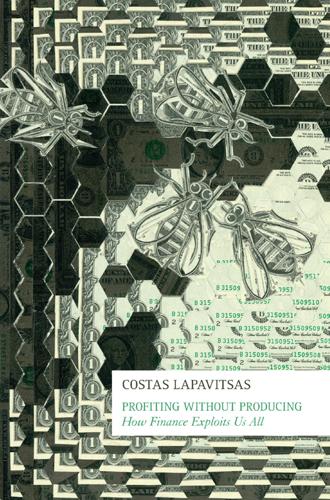
Profiting Without Producing: How Finance Exploits Us All
by
Costas Lapavitsas
Published 14 Aug 2013
Operational risk covers a wide variety of areas, from delays in finalizing legal documentation, to not sending cash payments in time, and even fraud. The collapse of Barings, the British investment bank, in 1995 partly as a result of the actions of a ‘rogue trader’ cast light on this danger, which has only become larger with the passage of time, including the use of rogue algorithms in computer-based high speed trading.24 Operational risk, consequently, has become a focal point of market-conforming regulation. The characteristic feature of Basel II introduced in 2004 but receiving a comprehensive form in 2006 was to incorporate both market and operational risk in its stipulations.25 The crisis of 2007, irrespective of its origins, is prima facie evidence of the failure of Basel II.

Model Thinker: What You Need to Know to Make Data Work for You
by
Scott E. Page
Published 27 Nov 2018
The second crash, the May 6, 2010, “flash crash” dropped the Dow Jones Industrial Average by 5% in three minutes. It was the result of algorithmic trades. Owing to the complexity and speed of modern financial markets, no one knows for certain what exactly caused the flash crash. We know that a large mutual fund made a huge sell order, dumping over $4 billion of stock futures into a market containing high-speed trading algorithms that try to exploit beneficial trades. The algorithms sensed a price trend and starting executing trades at breakneck speed. Imagine the riot model at high speed. This produced a toxic market, in which traders worry that large institutional investors know something that they do not know and so they exit the market.6 Many of the algorithms stopped trading given the abnormal market behavior; other algorithms kept selling, and a crash ensued, all in the span of a couple of minutes.

Evil Geniuses: The Unmaking of America: A Recent History
by
Kurt Andersen
Published 14 Sep 2020
I suspect that the immense power of the computer is being harnessed to this paper economy, not to do the same transactions more economically but to balloon the quantity and variety of financial exchanges…facilitating nth-degree speculation which is short-sighted and inefficient. I love his phrase nth-degree speculation. It covered the range of obsessive-compulsive financial speculation that would be enabled by computers and the Internet, from the mania for derivatives in the late twentieth century to high-speed trading in the twenty-first. With more and more people suddenly in the business of buying and selling stocks for a living, digital technology enabled more and more stock to be bought and sold, an order of magnitude increase in the scale of that churn between the 1970s and 2000. “What is clear,” Tobin concluded in 1984, “is that very little of the work done by the securities industry” these days “has to do with the financing of real investment in any very direct way

The Quiet Coup: Neoliberalism and the Looting of America
by
Mehrsa Baradaran
Published 7 May 2024
The risks that humanity will confront in the future, whether viral COVID or viral capital, will be of the pan variety. And yet with risks come opportunities. The COVID-19 virus was also the first time many of us began to see the veins and sinews of the economy, the supply chain of which we were but just one consuming node. While money and viruses travel the globe through high-speed trading networks, so too do ideas, videos, dances, songs, and protests, stretching our moral imagination and empathy. It is almost as if the virus had to show us humans, the last to know, that our globe has been operating as a single panhuman organism. THIS BOOK was very difficult for me to finish—I spent too much time reading too much material and then writing thousands of words that never made it into the final draft.

WTF?: What's the Future and Why It's Up to Us
by
Tim O'Reilly
Published 9 Oct 2017
“To model correctly one tranche of one CDO took about three hours on one of the fastest computers in the United States. There is no chance that pretty much anybody understood what they were doing with these securities. Creating things that you don’t understand is really not a good idea no matter who owns it.” In short, both high-speed trading and complex derivatives tilt financial markets away from human control and understanding. But they do more than that. They have cut their anchor to the human economy of real goods and services. As Bill Janeway noted to me, the bursting of what he calls the “super-bubble” in 2008 “shattered the assumption that financial markets are necessarily efficient and that they will reliably generate prices for financial assets that are locked onto the fundamental value of the physical assets embedded in the nonfinancial, so-called real economy.”

More Money Than God: Hedge Funds and the Making of a New Elite
by
Sebastian Mallaby
Published 9 Jun 2010
Much as with the Simons team, the ghosts that Shaw discovered were hard to explain: When he found recurring patterns and printed them out, there were no familiar terms that could be used to make sense of the squiggles on the paper. The effects were so far from being intuitive that Shaw had no need for high-speed trading systems: He did not need to get orders to market faster than rivals because he was confident that he would have none.10 Pretty soon, the profits started to roll in, and Shaw outgrew the premises in Greenwich Village. He moved to a loft in the Flatiron District in 1989 and then to a futuristic tower on West Forty-fifth Street two years later; meanwhile, Morgan Stanley’s frustrated bosses closed down the Analytical Proprietary Trading unit.
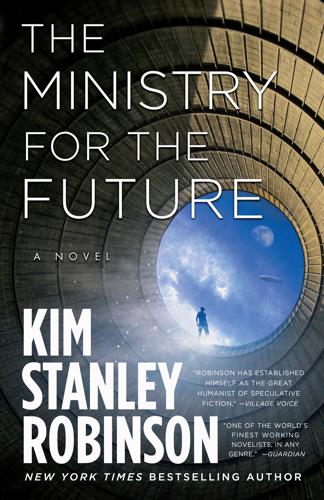
The Ministry for the Future: A Novel
by
Kim Stanley Robinson
Published 5 Oct 2020
What we do now creates damage that hits decades later, so we don’t charge ourselves for it, and the standard approach has been that future generations will be richer and stronger than us, and they’ll find solutions to their problems. But by the time they get here, these problems will have become too big to solve. That’s the tragedy of the time horizon, that we don’t look more than a few years ahead, or even in many cases, as with high-speed trading, a few micro-seconds ahead. And the tragedy of the time horizon is a true tragedy, because many of the worst climate impacts will be irreversible. Extinctions and ocean warming can’t be fixed no matter how much money future people have, so economics as practiced misses a fundamental aspect of reality.

Future Crimes: Everything Is Connected, Everyone Is Vulnerable and What We Can Do About It
by
Marc Goodman
Published 24 Feb 2015
Chapter 16: Next-Generation Security Threats: Why Cyber Was Only the Beginning 1 “had become so fragmented”: Nina Golgowski, “ ‘Syrian Hackers’ Tweet FALSE Report of Explosions at White House and Send Panicked DOW Jones Plunging 100 Points,” Mail Online, April 23, 2013; Jim McTague, “Why High-Frequency Trading Doesn’t Compute,” Barron’s, Aug. 11, 2012; Shan Carter and Amanda Cox, “One 9/11 Tally,” New York Times, Sept. 8, 2011; Doug Stanglin and David Jackson, “Timeline of AP Hacking, Reaction,” USA Today, April 23, 2013; Will Oremus, “Would You Click the Link in This Email That Apparently Tricked the AP,” Slate, April 23, 2013; Tom Lauricella, Kara Scanell, and Jenny Strasburg, “How a Trading Algorithm Went Awry,” Wall Street Journal, Oct. 2, 2010; Bernard Condon, “Stocks Stumble After a Fake Tweet Announced White House Attack,” Associated Press, April 25, 2013; Nick Baumann, “Too Fast to Fail: Is High-Speed Trading the Next Wall Street Disaster?,” Mother Jones, Jan/Feb. 2013. 2 The legendary Silicon Valley entrepreneur: Vinod Khosla, “Do We Need Doctors or Algorithms?,” TechCrunch, Jan. 10, 2012. 3 Today, artificial intelligence e-discovery: Rachael King, “Artificial Intelligence May Reduce Soaring E-discovery Costs,” CIO Journal, Oct. 29, 2013. 4 Just one algorithm alone: Amy Biegelsen, “Unregulated FICO Has Key Role in Each American’s Access to Credit,” Center for Public Integrity, May 17, 2011. 5 In a study: Adam D.